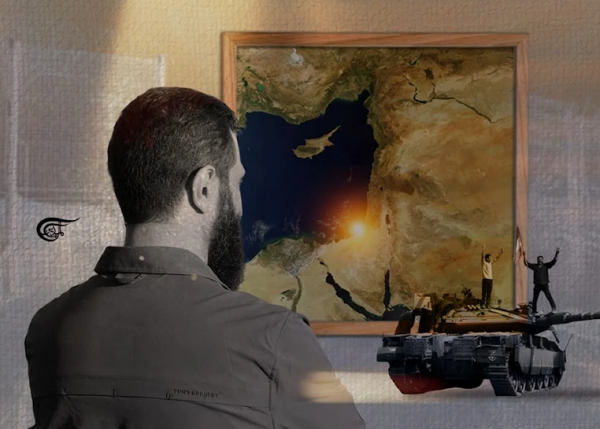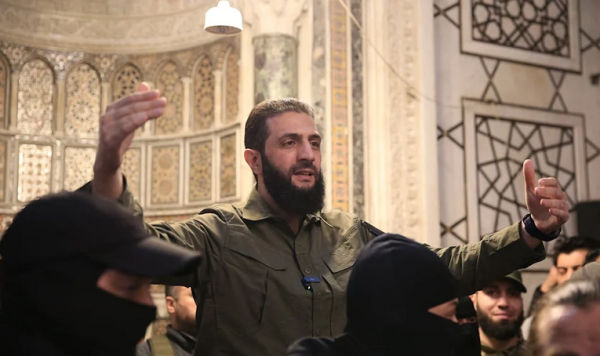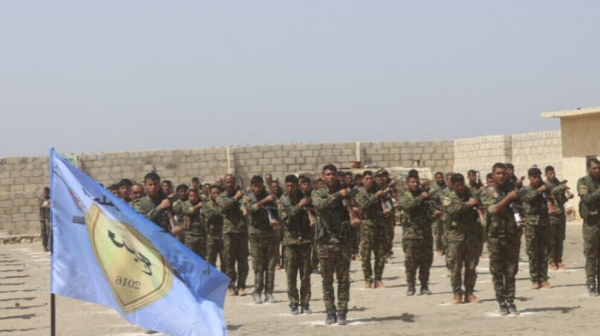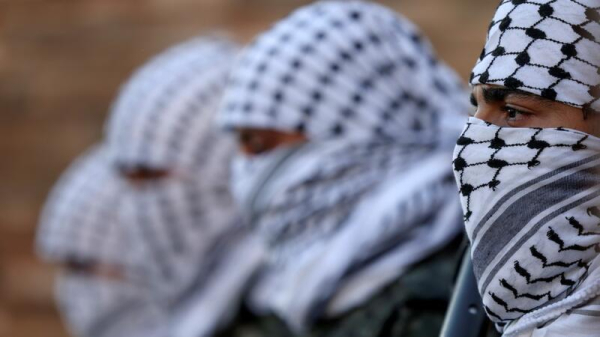Suche
Beiträge, die mit counterrevolution getaggt sind
HTS Offensive in Syria: A Proxy for Imperialist Domination: BAP
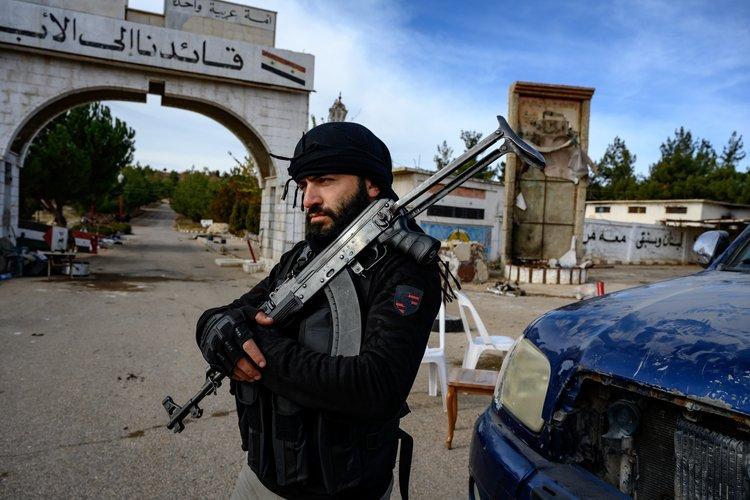
The Black Alliance for Peace (BAP) unequivocally condemns the recent announcement by Colonel Hassan Abdul Ghani, spokesman for the HTS-led Syrian Ministry of Defense, regarding the “second phase” of military operations against so-called “remnants” of the former Assad government. This escalation of violence is not merely a local or regional conflict but a direct manifestation of U.S.-led imperialist intervention in Syria. HTS (Hay’at Tahrir al-Sham), far from being an independent actor, functions as a proxy force advancing the geopolitical interests of the United States, Israel, and their allies, whose primary goal is to destabilize the region and maintain control over its resources.
The primary contradiction in Syria is not between competing local factions but between the Syrian people and the imperialist forces that have systematically exploited and devastated their nation. The U.S., alongside its NATO allies and regional partners, has fueled this crisis by arming, funding, and legitimizing extremist groups like HTS to serve as instruments of its imperialist agenda. These groups, under the guise of opposition to the former Assad government, have perpetuated violence, sectarianism, and chaos, all while advancing the interests of their imperialist backers.
The recent massacres in Syria’s coastal regions, where over a thousand civilians were brutally targeted and killed, are a direct consequence of this imperialist strategy. By supporting and enabling groups like HTS, the U.S. and its allies have created the conditions for endless cycles of violence and human suffering. Colonel Ghani’s announcement of a “second phase” of military operations is not a step toward liberation or justice but a continuation of the imperialist project to fragment and dominate Syria.
As the conflict in Syria continues to unfold, it is increasingly evident that large sectors of the U.S. left have failed to ground their analysis in objective materialist principles, instead resorting to subjective moral posturing. This failure is not new; it echoes the left’s misguided alignment with U.S.-led imperialism in Libya, Iraq, Nicaragua, Tigray/Ethiopia, Ukraine, and beyond. Their relative silence in the face of the recent atrocities underscores a betrayal of the anti-imperialist principles they claim to uphold, actively manufacturing consent for these murders in real time.
The recent reports of extrajudicial killings, house-to-house massacres, and the targeted violence against specific communities reveal a grim reality that cannot be ignored. These atrocities are not merely the result of internal strife but are deeply rooted in imperialist strategies of divide and conquer, tactics employed to maintain control over West Asia and its resources. The Black Alliance for Peace calls for an end to these imperialist interventions and stands in solidarity with the Syrian people in their struggle for peace and self-determination.
source: Black Alliance for Peace
https://abolitionmedia.noblogs.org/?p=17555
#blackAllianceForPeace #blackLiberation #counterRevolution #syria #us
Syria: Government says "Baath era over", SOHR reports 600+ deaths - Shafaq News
Shafaq News/ The Syrian Defense Ministry announced, on Saturday, that government forces are continuing operations against former regime loyalists, asserting that the situation remains fully under contShafaaq News (شفق نيوز)
The Black Alliance for Peace (BAP) unequivocally condemns the recent announcement by Colonel Hassan Abdul Ghani, spokesman for the HTS-led Syrian Ministry of Defense, regarding the "second phase" of military operations against so-called "remnants" of the former Assad government. This escalation o
https://abolitionmedia.noblogs.org/17555/
#Communiques #BlackAllianceForPeace #BlackLiberation #counterrevolution #syria #us
Syria’s Geopolitical Shift, al-Aqsa Flood, and the Future of the Levant
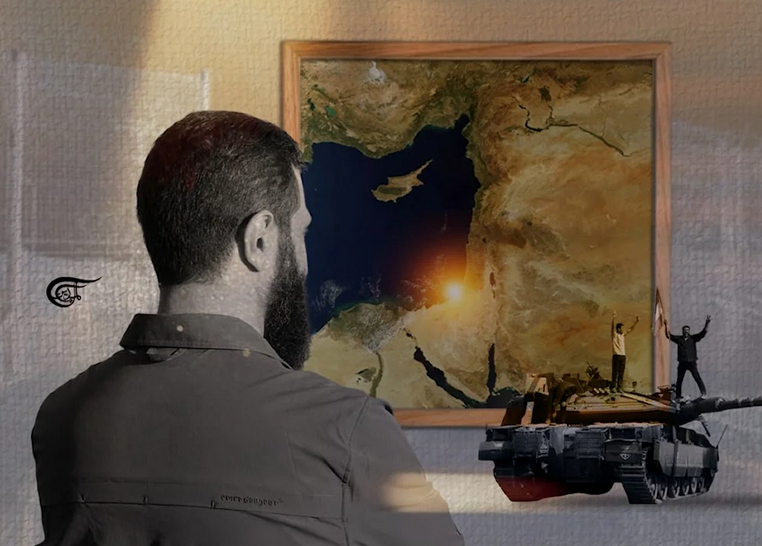
In an unexpected and precipitous turn of events, Syria’s geopolitical landscape has shifted radically in just a few days. President Bashar al-Assad, Syria’s strongman, has been deposed. The Syrian Arab Army, which had withstood, against all odds, a 12-year war against heavily armed and funded terrorist groups, shockingly crumbled in what seemed like the blink of an eye. Hay’at Tahrir al-Sham (HTS) has taken control of the entire country.
A complete picture of what happened in the days leading up to this cataclysmic geopolitical change, as well as the event itself, may take some time to emerge. However, it is obvious that the new political reality has far-reaching repercussions for the Levant as a whole.
Al-Assad’s Syria was a cornerstone in the Axis of Resistance, and the significant geopolitical shift in Syria has raised concerns about the future of the al-Aqsa Flood, the prospects of reaching a ceasefire in Gaza, and the broader future of the region.
The Syrian Geopolitical Shift and al-Aqsa Flood
The al-Aqsa Flood on October 7, 2023, did not occur in a vacuum. It was the culmination of a series of regional events that had reshaped the Levant’s status quo over the course of nearly two decades.
Hezbollah’s liberation of South Lebanon in 2000 signalled the start of a new chapter in the Arab struggle against the Zio-American alliance. It was the first uncontested defeat for the Israeli Occupation Forces (IOF) since the creation of the Zionist Entity in 1948.
Following that decisive defeat, the Axis of Resistance (which first emerged in 2003) continued to challenge the IOF’s deterrence in the region. The occupation’s unilateral withdrawal from the Gaza Strip in 2005, the 2006 assault on Lebanon, and subsequent wars on Gaza—Operation Cast Lead (2008–2009), Operation Pillar of Defence (2012), Operation Protective Edge (2014), and the Sword of Al-Quds (2021), launched by Hamas against “Israel”—all contributed to further eroding the IOF’s prestige. During these two decades of relatively low-intensity battles, the Axis of Resistance managed to push the region’s balance of power against the interests of the Zionist-American alliance, leaving the region in a state of disequilibrium.
The Levant had become a ticking time bomb, awaiting a major military confrontation to resolve the newly established power imbalance, putting the region’s contending forces on an unavoidable collision course. This shift in the balance of power was the primary reason for encouraging Hamas’ armed wing, the al-Qassam Brigades, to carry out the operation on October 7, 2023.
In other words, the al-Aqsa Flood, aptly described as a political earthquake that shook the entire Levant, was part of a broader chain of interconnected events.
There is broad consensus that the latest events in Syria cannot be viewed in isolation from those of October 7, 2023. However, two conflicting perspectives have arisen on how to interpret the Syrian geopolitical shift in relation to the al-Aqsa Flood:
- The first interpretation argues that the al-Aqsa Flood revitalised a popular Syrian movement seeking to overthrow oppression and dictatorship, ultimately leading to the fall of President Bashar al-Assad.
- The second viewpoint, however, sees what transpired in Syria as a coup against the al-Aqsa Flood itself. From this perspective, the latest events in Syria are a continuation of the ongoing war between the Zionist-American alliance and the Axis of Resistance, which began on October 7, 2023.
In any case, Abu Mohammad al-Jolani told Al Arabiya TV on 29 December 2024 that HTS’s actions had averted a regional war between the Iraqi Resistance, backed by the Islamic Republic of Iran, and Israelis in Syria. In another statement, he said that Syria would not be used as a launchpad for attacks on “Israel”. He further reassured “Israel” that HTS had removed the threat posed by the Islamic Revolution Guard Corps (IRGC) and Hezbollah fighters near the occupied Golan Heights. Moreover, officials in HTS’s new Syrian government have echoed al-Jolani’s views. These remarks lend credence to the perspective that the recent developments in Syria represent a coup against al-Aqsa Flood.
The IOF succeeded in delivering significant tactical blows to Hezbollah and the al-Qassam Brigades during the ongoing war. However, Netanyahu was unable to translate these achievements into a strategic advantage against the Axis of Resistance until the fall of al-Assad’s Syria, prompting him to declare, albeit prematurely, that “Israel” was transforming the face of the ‘Middle East’.
Ceasefire in Gaza
The fall of Syria has shifted the dynamics of the ongoing war. Netanyahu believes he can now conclude the war on Gaza with some gains rather than leaving completely empty-handed. In recent weeks, this has encouraged the Israelis to engage in serious ceasefire negotiations in Gaza for the first time, driven by the need to extricate the IOF from the Gazan quagmire—not to mention that the Israeli assault on Gaza has reached a stagnation point.
Nevertheless, Netanyahu continues to push for better terms to his advantage against a steadfast al-Qassam Brigades and other Palestinian Resistance factions who, even after 15 months of fierce battle, are still inflicting daily losses on the IOF and launching rockets that occasionally reach as far as occupied al-Quds.
While this war has demonstrated that no deal is certain until it is fully realised, indications suggest that a ceasefire agreement is closer than ever in this renewed round of negotiations.
Future of the Levant
Ze’ev Jabotinsky (1880–1940), regarded as the spiritual father of the Israeli right wing and founder of the Revisionist Movement, outlined the foundations of the Israeli security doctrine in his seminal two-part thesis, *The Iron Wall* (1923). Drawing on Jabotinsky’s vision, David Ben-Gurion subsequently articulated the Israeli Security Triangle, consisting of deterrence, early warning, and decisive victory—principles that continue to underpin the IOF’s national security strategy to this day.
As previously noted, the effectiveness of the Israeli Security Triangle doctrine has waned over the past two decades, particularly as the Axis of Resistance shifted the regional balance of power against the Zio-American alliance. This decline culminated in al-Aqsa Flood, a turning point that dismantled all three pillars of the Triangle. Hamas was undeterred, the IOF failed to achieve early warning, and a decisive victory remains elusive.
True to its nature, the Zionist entity reverted to its foundational strategies, echoing Jabotinsky’s doctrine in its rawest form. Netanyahu himself recently invoked the principles of the Iron Wall, reminding the world of its enduring relevance.
In its ongoing war on Gaza, the IOF has adopted Chief of General Staff Lt. Gen. Gadi Eisenkot’s so-called Dahiya doctrine—a strategy of employing “disproportionate force” to inflict great damage and destruction on civilian areas designated by “Israel” as military bases.
By implementing this doctrine against Palestinian civilians, Netanyahu aims to restore the IOF’s eroded deterrence. However, to re-establish Ben-Gurion’s Security Triangle, “Israel”, according to Ben-Gurion himself, must completely eliminate the enemy’s military forces and equipment—a goal that has yet to be achieved on either the Gaza or Lebanon fronts. Furthermore, despite the tactical Israeli successes against Palestinian Resistance factions and Hezbollah, whether it can effectively deter them, or if these challenges will continue to escalate, remains to be seen.
In conclusion
Given the complexity of the current situation, with myriad new factors in play—such as the uncertainty surrounding Syria’s future, the regrouping of Hezbollah, the fragile ceasefire on the Lebanese front, the ongoing war in Gaza, and the unclear policies of President-elect Donald Trump, to name but a few—it would be unrealistic to predict the exact course of events awaiting the region. Nevertheless, amidst this highly fluid state of affairs, one thing is certain: Al-Aqsa Flood has ushered in a new phase in the Levant that has yet to be concluded.
Amro Allan
Source: Al Mayadeen
https://abolitionmedia.noblogs.org/?p=13665
#alAqsaFlood #counterRevolution #palestine #resistance #syria #westAsia
Syria’s geopolitical shift, al-Aqsa Flood, and the future of the Levant
Syria's geopolitical landscape has radically shifted as President Bashar al-Assad is deposed and HTS takes control. But what are this shift's implications for the Levant, Gaza, and the broader Axis of Resistance?Amro Allan (Syria’s geopolitical shift, al-Aqsa Flood, and the future of the Levant)
In an unexpected and precipitous turn of events, Syria’s geopolitical landscape has shifted radically in just a few days. President Bashar al-Assad, Syria’s strongman, has been deposed. The Syrian Arab Army, which had withstood, against all odds, a 12-year war against heavily armed and funded terrorist groups...
https://abolitionmedia.noblogs.org/13665/
#News #AlAqsaFlood #counterrevolution #palestine #resistance #syria #WestAsia
HTS Jolani Declares a Total Halt on Conflict With Zionist Colonialism
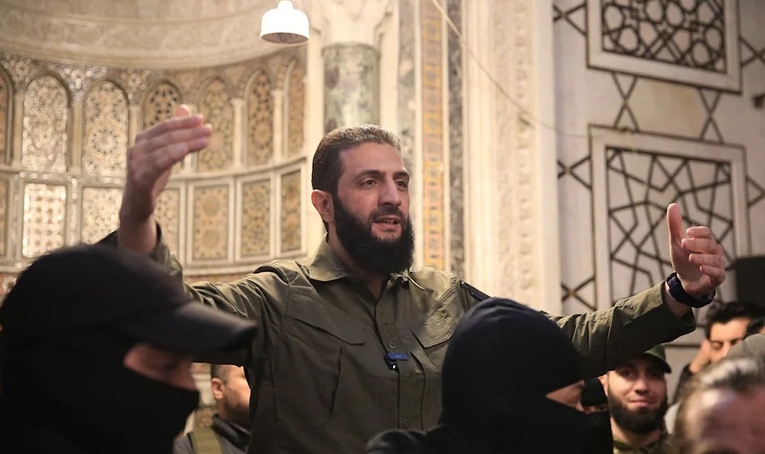
In an exclusive interview with The Times on Monday, Syria’s new counter-revolutionary leader Mohammed al-Jolani, now preferring to go by his birth name Ahmed al-Sharaa, pledged that he would not allow the country to be used as a launchpad for attacks “against ‘Israel’ or any other state,” in a new step of collusion with colonialism in the region.
Al-Sharaa called on the Zionist regime to halt its airstrikes and withdraw from Syrian territory it occupied following Assad’s departure.
“‘Israels’ justification was the presence of Hezbollah and Iranian militias, so that justification is gone,” he said. “We are committed to the 1974 agreement and we are prepared to return the UN [monitors].”
He added, “We do not want any conflict whether with ‘Israel’ or anyone else and we will not let Syria be used as a launchpad for attacks. The Syrian people need a break, and the strikes must end and Israel has to pull back to its previous positions.”
Calls to Lift Sanctions
Sharaa urged the West to lift sanctions imposed during Assad’s tenure, arguing that these restrictions hinder Syria’s recovery and were no longer justified.
“Countries must now lift this designation. Syria is very important geostrategically. They should lift all restrictions, which were imposed on the flogger and the victim — the flogger is gone now. This issue is not up for negotiation.”
HTS, which is an offshoot of al-Qaeda in Syria, remains designated as a terrorist organization by the US, UK, and other countries. Sharaa, himself, was once a member of ISIS and al-Qaeda. According to The Times, Al-Sharaa dismissed the designation, stating, “We did military activities,” but called the label “a political designation” that was more applicable to the Assad government.
Al-Sharaa currently has a $10 million bounty on his head from the US, but he said he did not care about his personal designation.
https://abolitionmedia.noblogs.org/?p=13170
#collaboration #counterRevolution #hts #jolani #syria
In an exclusive interview with The Times on Monday, Syria’s new counter-revolutionary leader Mohammed al-Jolani, now preferring to go by his birth name Ahmed al-Sharaa, pledged that he would not allow the country to be used as a launchpad for attacks “against ‘Israel’ or any other state,” in a new step of collusion with colonialism in the region.
https://abolitionmedia.noblogs.org/13170/
#collaboration #counterrevolution #hts #jolani #syria
Manbij Ceasefire Goes Into Effect, Counter-Revolution Threatens Rojava
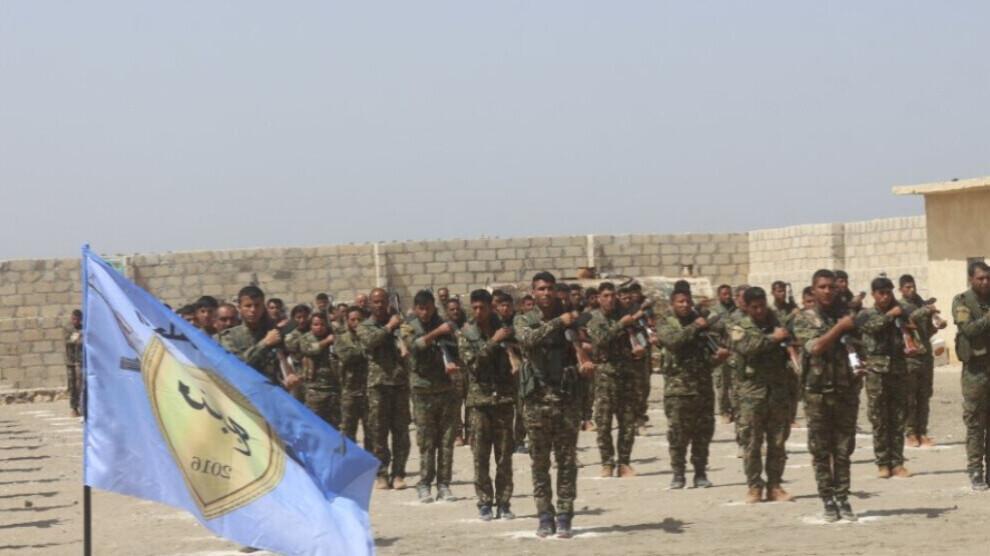
A four-day ceasefire was announced yesterday in Manbij and its countryside between the Syrian Democratic Forces (SDF) and the Turkish-backed “Syrian National Army,” following three days of intense clashes. The truce, reportedly aimed at facilitating political solutions and prisoner exchanges, was confirmed by the Turkish-backed Syrian National Army faction, which stated that the agreement seeks to “implement humanitarian and security understandings, including the withdrawal of SDF members and their families from the region.” However, skirmishes continued near Tishreen Dam in northeastern Aleppo, sending a clear Turkish message that the agreement applies only to Manbij, signaling its intent to maintain operations until it secures control over the entire border with Syria.
Meanwhile, the SDF and the Autonomous Administration expressed their readiness for dialogue and to initiate a political transition in the country. SDF Commander Mazloum Abdi reiterated the organization’s willingness to facilitate the return of the tomb of Suleiman Shah to Ain al-Arab. Additionally, the Autonomous Administration announced the adoption of Syria’s new flag across its institutions, reaffirming the region’s integral connection to Syria’s territorial unity. The adoption of this flag after the counter-revolutionary offensive signals increased problems for the Rojava experiment.
According to Al-Akhbar, their sources revealed that a delegation comprising SDF leaders, tribal representatives, and local officials from Al-Hasakah will visit Damascus to discuss the future of northeastern Syria. The delegation plans to advocate for the preservation of the Autonomous Administration as a model for Syria’s administrative and military framework. Meanwhile, US and French diplomats are reportedly mediating talks between Turkey and the SDF to address security concerns, including the management of ISIS prisons and camps in SDF-controlled areas. Turkey, however, is expected to demand that the SDF dissolve itself, sever ties with the PKK, and expel PKK members from Syria in exchange for political representation in the new government.
Internally, the SDF faces mounting challenges threatening its military structure. Protests erupted in several cities in Deir Ezzor, Aleppo, and Al-Hasakah, demanding a transfer of control to the Military Operations Administration. Several high-ranking members of the SDF’s Deir Ezzor Military Council have defected, including its leader, Abu Laith Khasham, who joined the Military Operations Administration, in affiliation with HTS. This marks the fifth defection within the council. Amid these tensions, the SDF’s security arm imposed a curfew across northeastern Syria, citing the need to safeguard public safety.
Furthermore, reports state that a draft of terms was sent to the SDF from the HTS regime. The new state demands that the Syrian government be recognized as the sole authority, that Arab areas are handed over to the military, that PKK cadres are expelled from the country (meaning the dissolution of the YPG and allied revolutionary forces), Arab prisoners are released, border crossings would now be administered by the counter-revolutionary state, and foreign ISIS prisoners be released to the new state.
https://abolitionmedia.noblogs.org/?p=13106
#counterRevolution #hts #manbij #pkk #rojava #syria #turkey #westAsia #ypg
A four-day ceasefire was announced yesterday in Manbij and its countryside between the Syrian Democratic Forces (SDF) and the Turkish-backed “Syrian National Army,” following three days of intense clashes.
https://abolitionmedia.noblogs.org/13106/
#News #counterrevolution #hts #manbij #pkk #rojava #syria #turkey #WestAsia #ypg
Western-backed Syrian counter-revolutionary forces pushed deeper into Syria today as regional revolutionary and resistance factions process the challenges and prepare for unprecedented difficulties in the near future.
The Syrian army collapsed on multipl
https://abolitionmedia.noblogs.org/12977/
#News #AlAqsaFlood #counterrevolution #hamas #hezbollah #hts #kurdistan #palestine #rojava #syria

